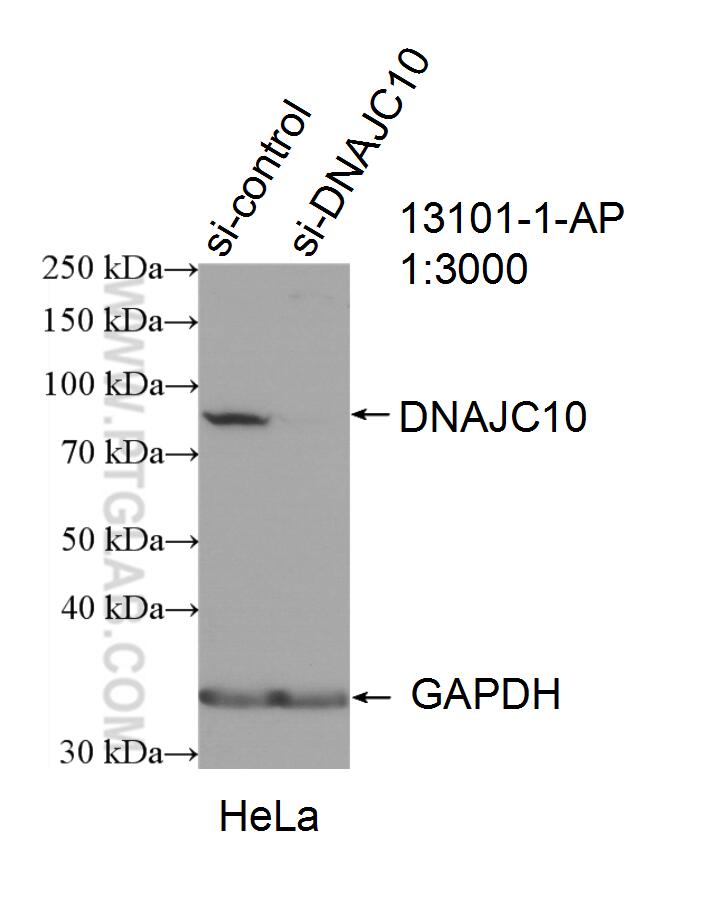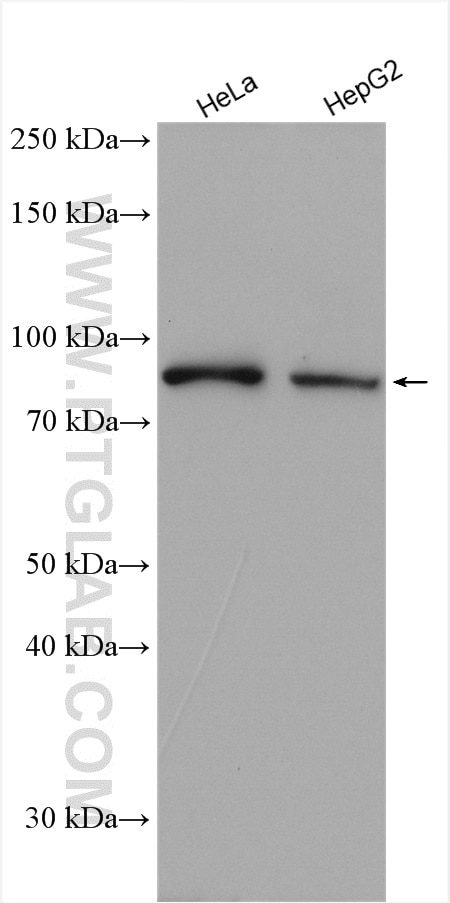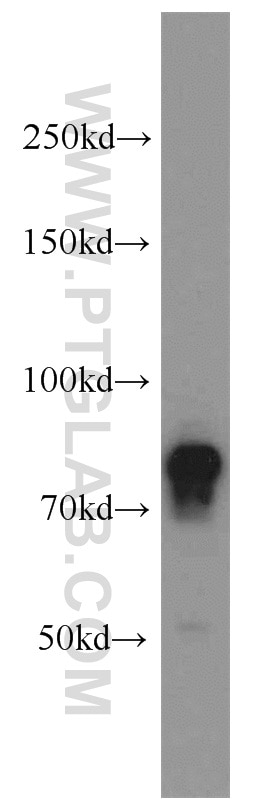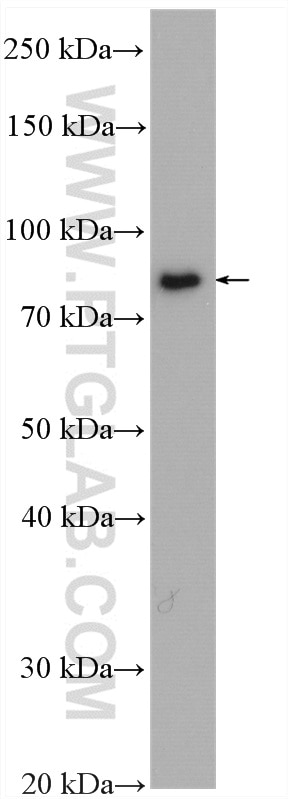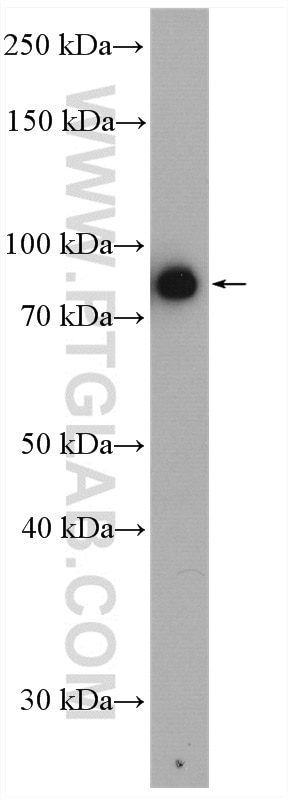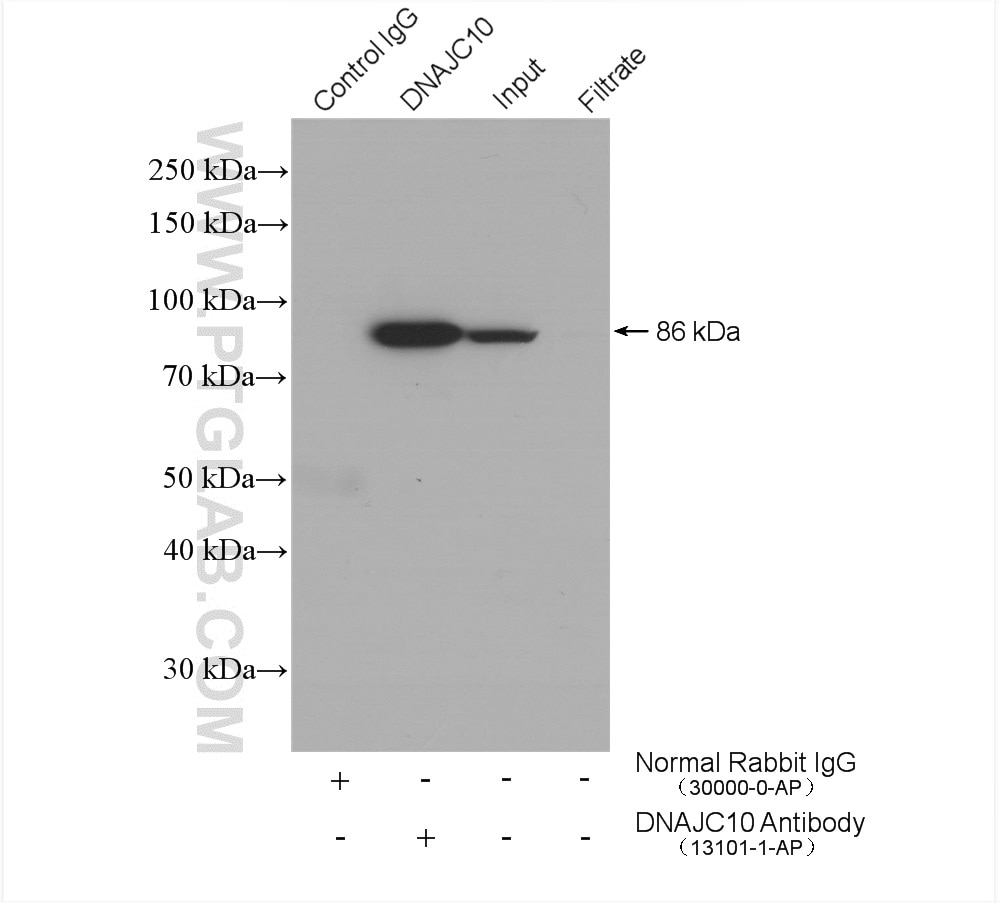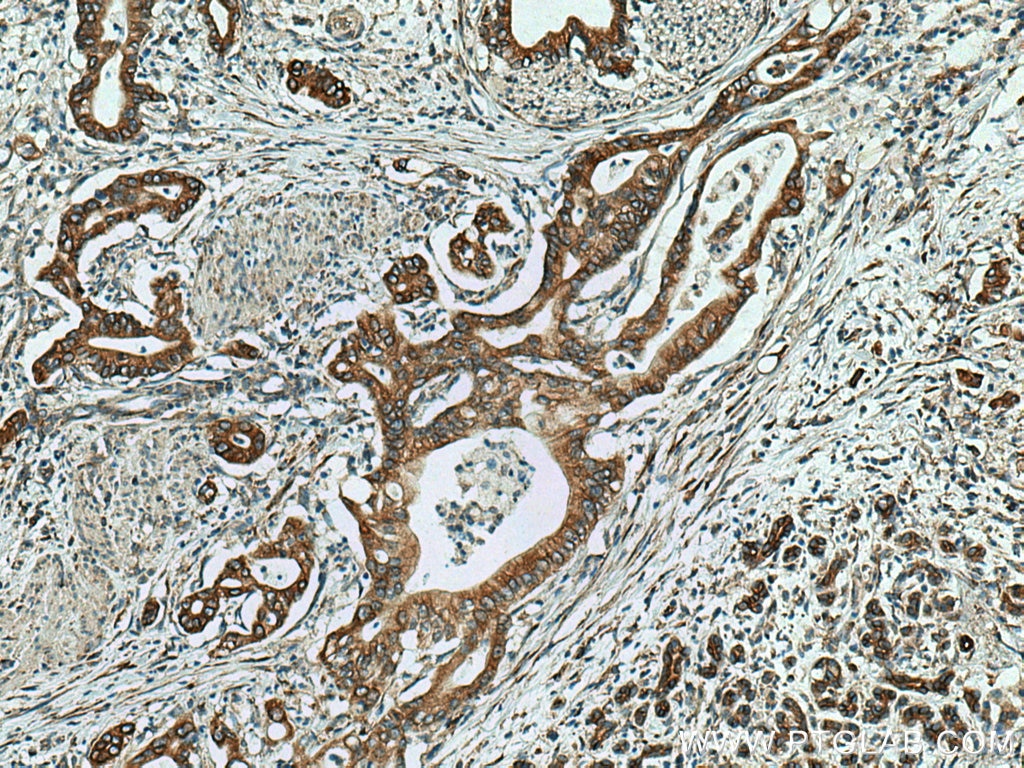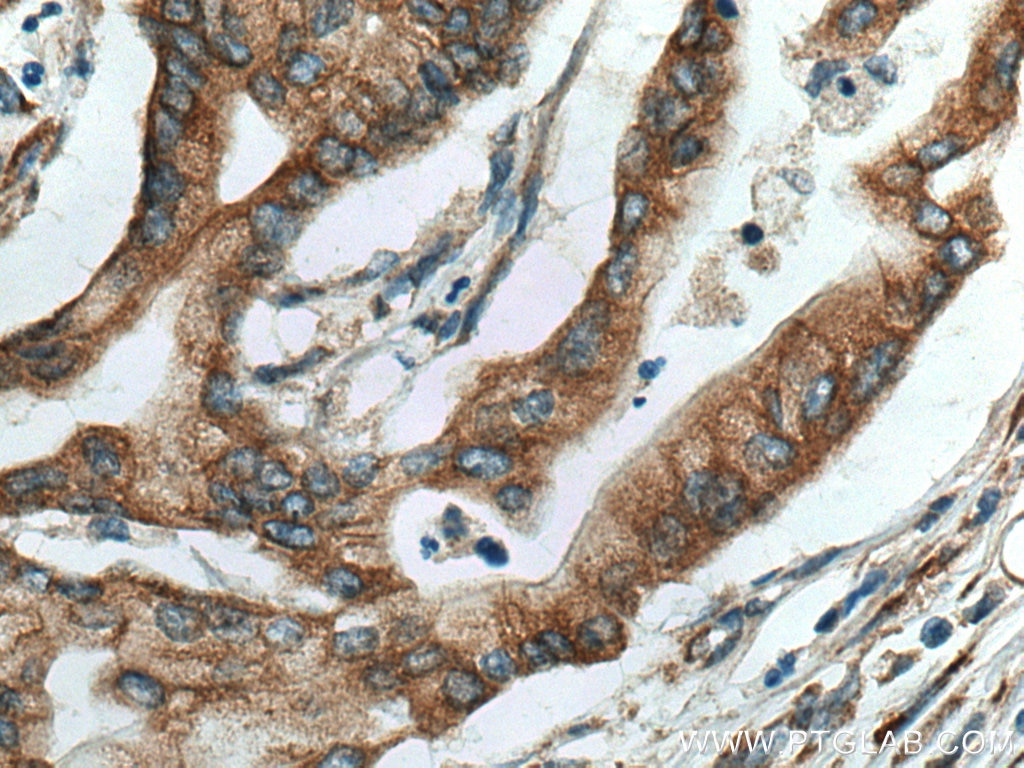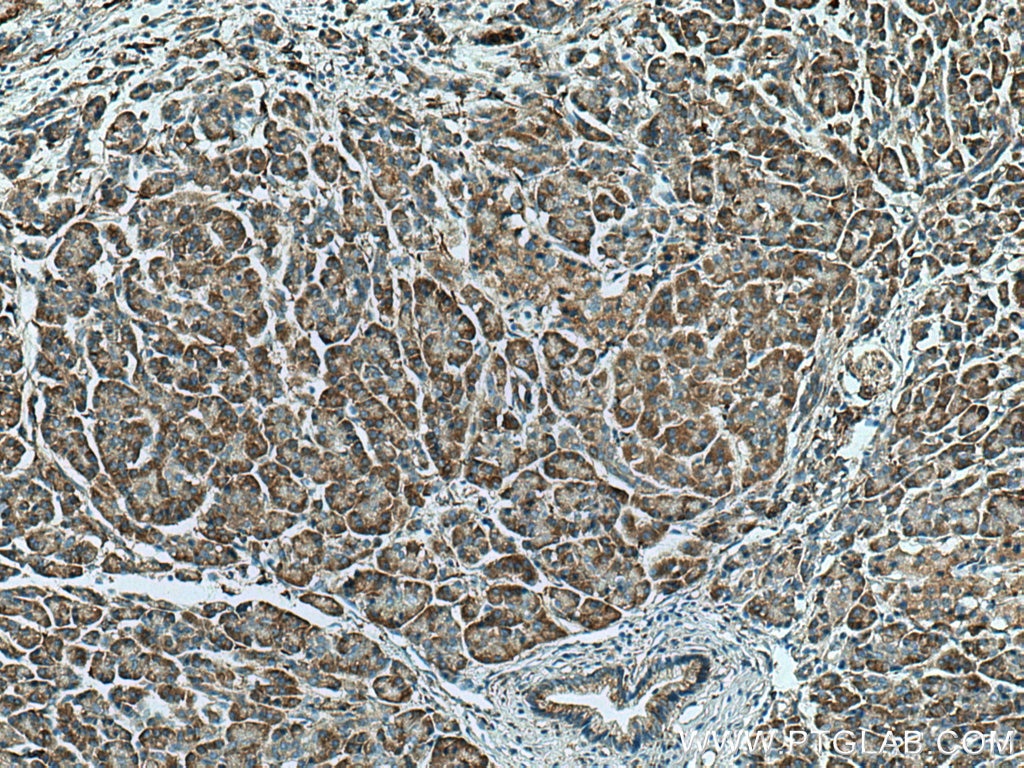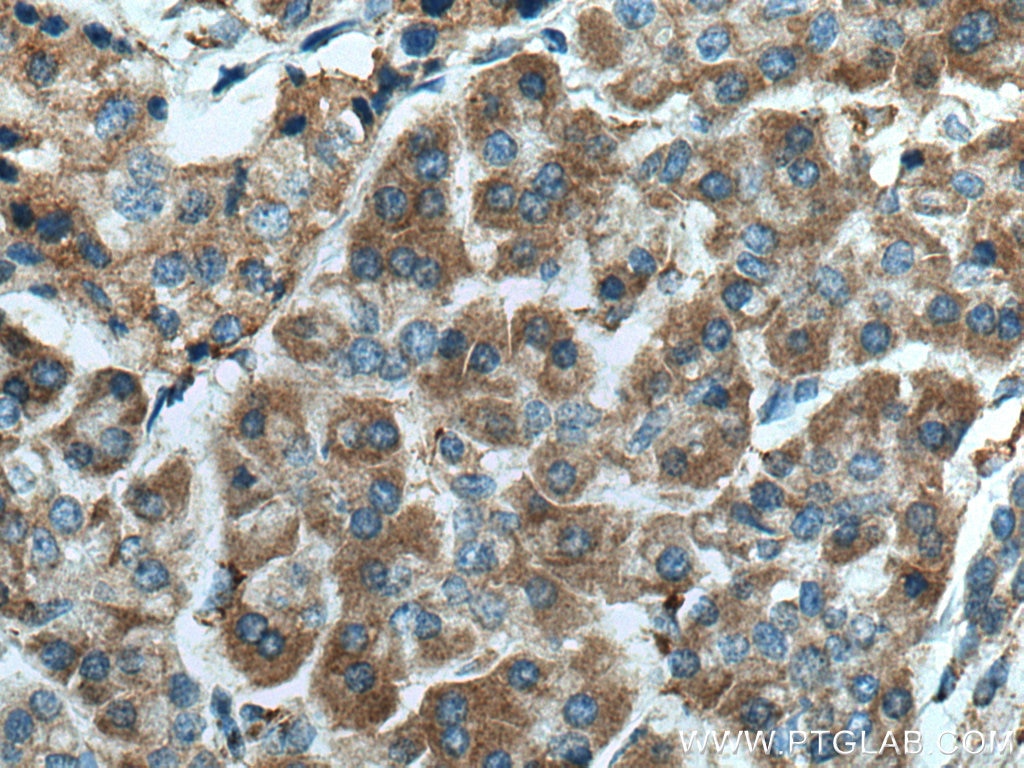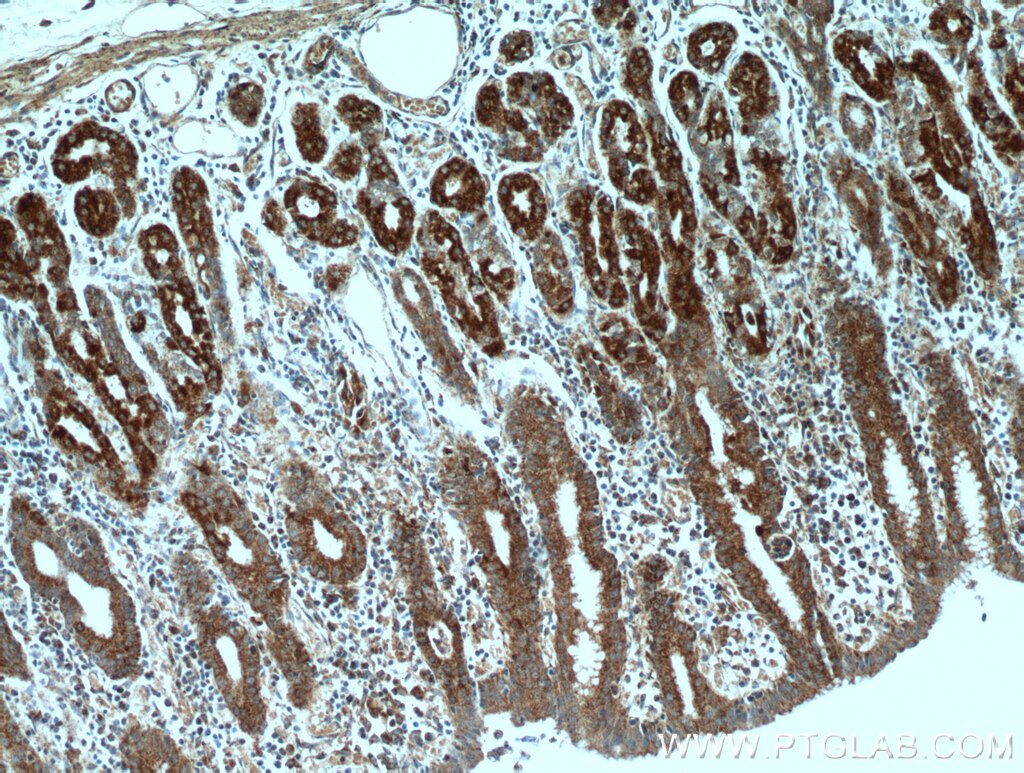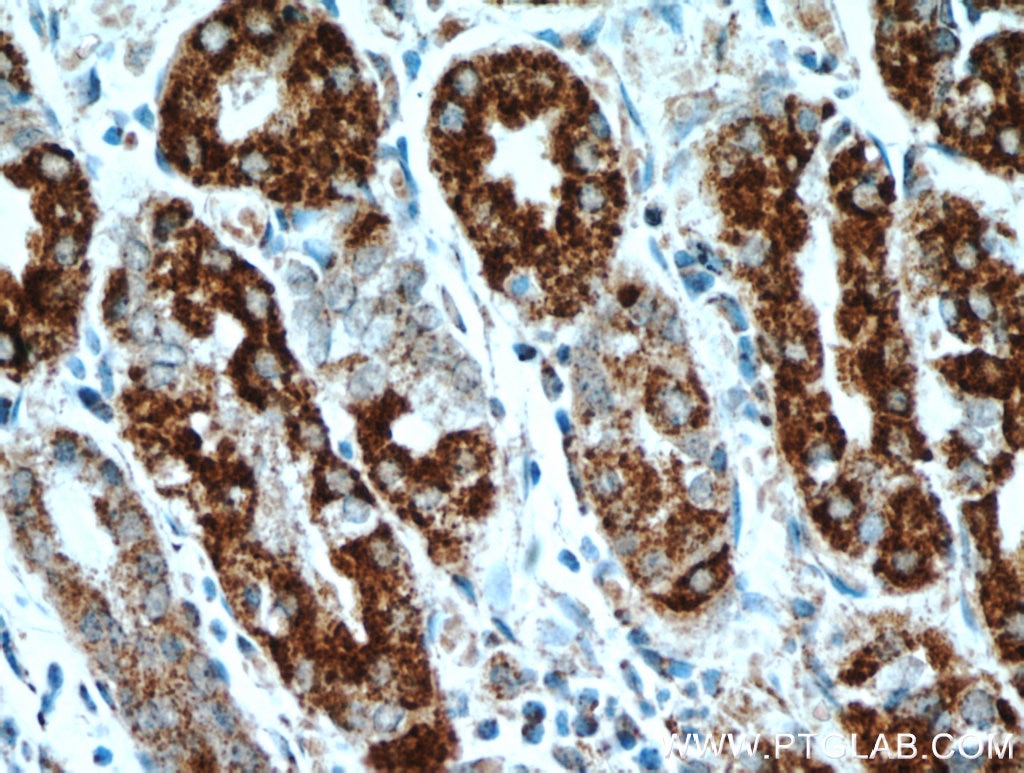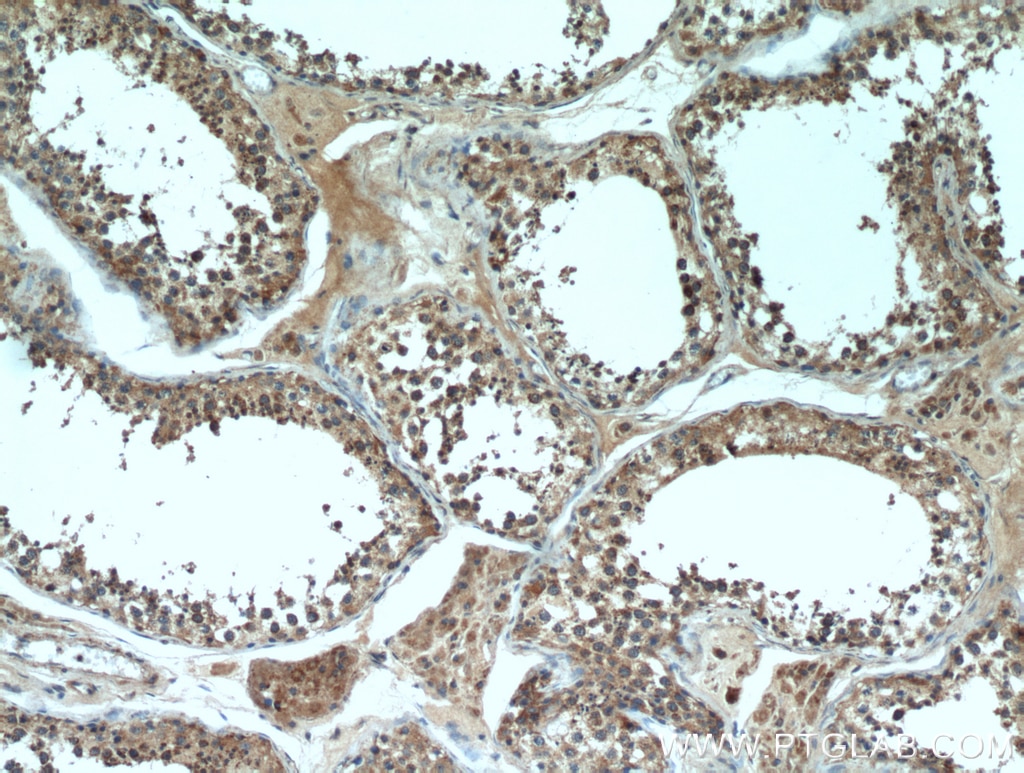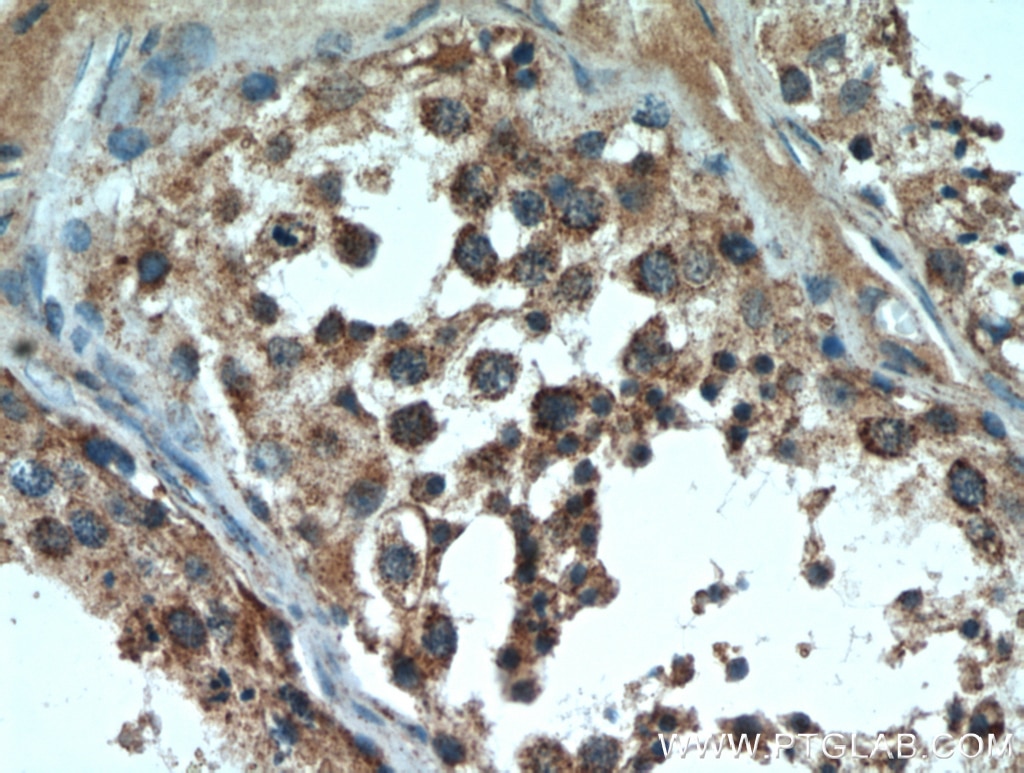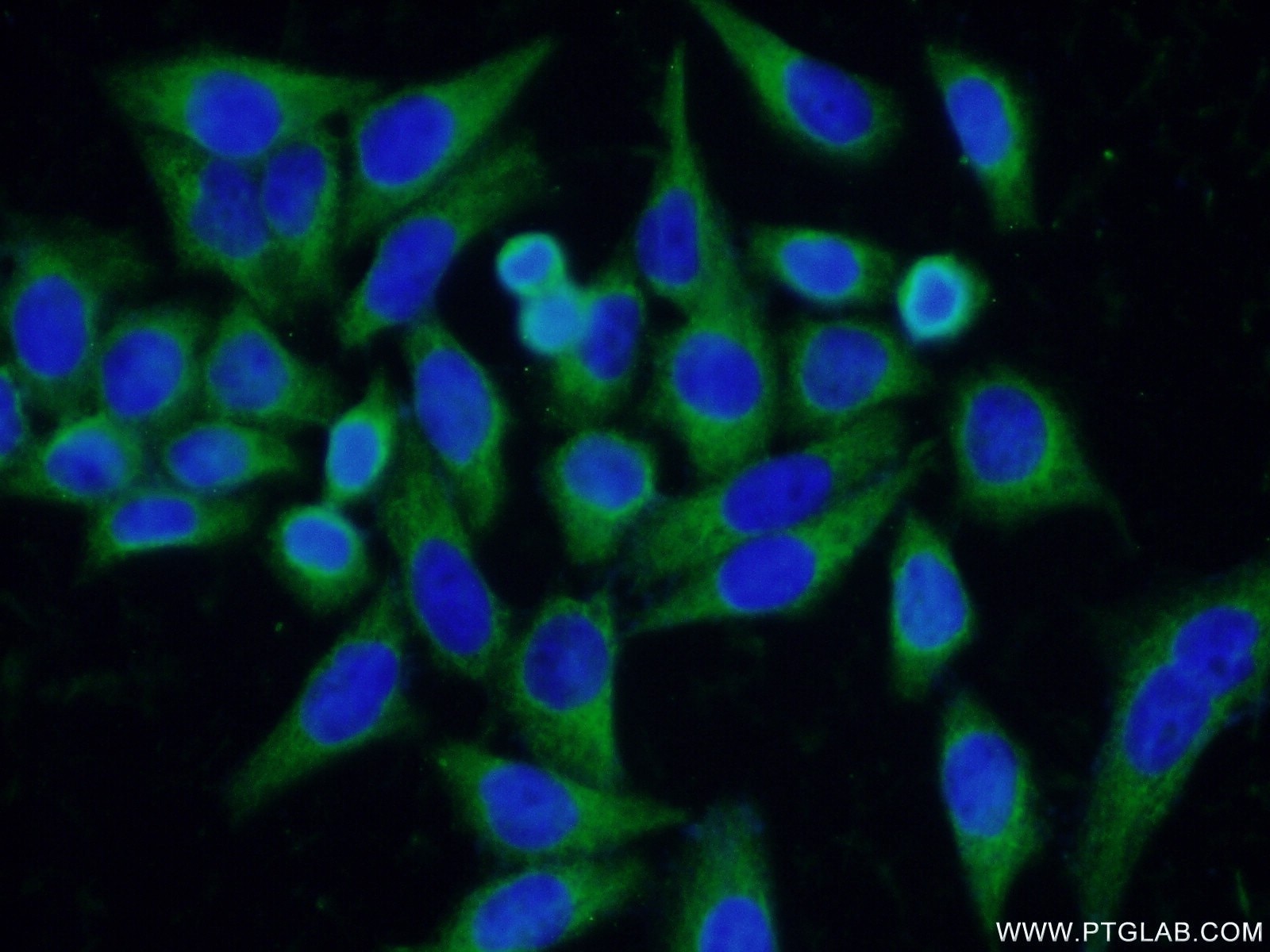- Phare
- Validé par KD/KO
Anticorps Polyclonal de lapin anti-DNAJC10
DNAJC10 Polyclonal Antibody for WB, IHC, IF/ICC, IP, ELISA
Hôte / Isotype
Lapin / IgG
Réactivité testée
Humain, rat, souris
Applications
WB, IHC, IF/ICC, IP, CoIP, ELISA
Conjugaison
Non conjugué
N° de cat : 13101-1-AP
Synonymes
Galerie de données de validation
Applications testées
| Résultats positifs en WB | cellules HeLa, cellules HepG2, tissu hépatique de souris |
| Résultats positifs en IP | cellules HeLa, |
| Résultats positifs en IHC | tissu de cancer du pancréas humain, tissu d'estomac humain, tissu testiculaire humain il est suggéré de démasquer l'antigène avec un tampon de TE buffer pH 9.0; (*) À défaut, 'le démasquage de l'antigène peut être 'effectué avec un tampon citrate pH 6,0. |
| Résultats positifs en IF/ICC | cellules HeLa |
Dilution recommandée
| Application | Dilution |
|---|---|
| Western Blot (WB) | WB : 1:2000-1:10000 |
| Immunoprécipitation (IP) | IP : 0.5-4.0 ug for 1.0-3.0 mg of total protein lysate |
| Immunohistochimie (IHC) | IHC : 1:500-1:2000 |
| Immunofluorescence (IF)/ICC | IF/ICC : 1:50-1:500 |
| It is recommended that this reagent should be titrated in each testing system to obtain optimal results. | |
| Sample-dependent, check data in validation data gallery | |
Applications publiées
| WB | See 13 publications below |
| IHC | See 1 publications below |
| IF | See 2 publications below |
| CoIP | See 1 publications below |
Informations sur le produit
13101-1-AP cible DNAJC10 dans les applications de WB, IHC, IF/ICC, IP, CoIP, ELISA et montre une réactivité avec des échantillons Humain, rat, souris
| Réactivité | Humain, rat, souris |
| Réactivité citée | rat, Humain |
| Hôte / Isotype | Lapin / IgG |
| Clonalité | Polyclonal |
| Type | Anticorps |
| Immunogène | DNAJC10 Protéine recombinante Ag3737 |
| Nom complet | DnaJ (Hsp40) homolog, subfamily C, member 10 |
| Masse moléculaire calculée | 793 aa, 91 kDa |
| Poids moléculaire observé | 80-90 kDa |
| Numéro d’acquisition GenBank | BC034713 |
| Symbole du gène | DNAJC10 |
| Identification du gène (NCBI) | 54431 |
| Conjugaison | Non conjugué |
| Forme | Liquide |
| Méthode de purification | Purification par affinité contre l'antigène |
| Tampon de stockage | PBS with 0.02% sodium azide and 50% glycerol |
| Conditions de stockage | Stocker à -20°C. Stable pendant un an après l'expédition. L'aliquotage n'est pas nécessaire pour le stockage à -20oC Les 20ul contiennent 0,1% de BSA. |
Informations générales
DNAJC10(DnaJ homolog subfamily C member 10)is also named as ERDJ5. The human ER-resident protein (ERdj5) ubiquitously expresses and is abundant in secretory tissues such as pancreas and testis and it may be involved in assisting protein folding and quality control in the ER(PMID:12411443). The deduced 793-amino acid protein has a calculated molecular mass of about 91 kD. ERDJ5 contains an N-terminal hydrophobic sequence, followed by a type III DnaJ domain, 4 thioredoxin-like domains, and a C-terminal KDEL endoplasmic reticulum (ER) retention signal. It can be modified by N-linked glycosylation(PMID:12446677). The ERdj5 antibody displays a higher affinity for endogenous ERdj5u.
Protocole
| Product Specific Protocols | |
|---|---|
| WB protocol for DNAJC10 antibody 13101-1-AP | Download protocol |
| IHC protocol for DNAJC10 antibody 13101-1-AP | Download protocol |
| IF protocol for DNAJC10 antibody 13101-1-AP | Download protocol |
| IP protocol for DNAJC10 antibody 13101-1-AP | Download protocol |
| Standard Protocols | |
|---|---|
| Click here to view our Standard Protocols |
Publications
| Species | Application | Title |
|---|---|---|
PLoS Pathog A cytosolic chaperone complexes with dynamic membrane J-proteins and mobilizes a nonenveloped virus out of the endoplasmic reticulum. | ||
Mol Cell Proteomics Thyroglobulin Interactome Profiling Defines Altered Proteostasis Topology Associated With Thyroid Dyshormonogenesis | ||
Diabetes Unbiased Profiling of the Human Proinsulin Biosynthetic Interaction Network Reveals a Role For Peroxiredoxin 4 in Proinsulin Folding. | ||
Mol Cell Proteomics Thyroglobulin Interactome Profiling Defines Altered Proteostasis Topology Associated With Thyroid Dyshormonogenesis. | ||
Biochem J Opposing regulation of endoplasmic reticulum retention under stress by ERp44 and PDIA6 |
